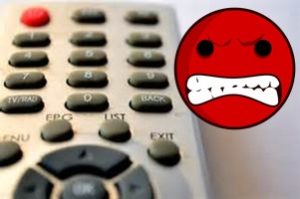Ventromedial: Emotional Regulation
Ventromedial Notes
Here’s the text version:
Frontal lobe
Prefrontal cortex
- dorsolateral cortex
Last to myelinate
Sleep deprivation
Executive functions
Working memory
Cognitive flexibility
Planning
- Orbitofrontal cortex
Controls
social adjustment
responsibility
mood
drive
gambling strategies
Alzheimer’s tangles
drug addiction
- Ventromedial cortex
Anatomically no difference between orbitofrontal and ventromedial
Only differ in connections
Processes risk & fear
Decision making
Inhibition of emotional responses
Rapidly develops during adolescence and young adulthood
Bilateral lesions
difficulty choosing between options with uncertain outcomes
severely impairs in personal and social decision making
choose immediate rewards; blind to future consequences
impairs learning from mistakes
make same decisions again & again
even if have negative consequences
retain intelligence
Connects with amygdala
Less associated with social functions
More with emotion regulation
Involved with
risk
ambiguity
Right hemisphere vmPFC
Detecting irony, sarcasm, and deception
If damaged:
Easily influenced by misleading advertising
“False tagging mechanism”
False Tagging Theory
All idea initially believed
Doubt occur when prefrontal cortex “tags” it as false
Provides doubt and skepticism
Suppresses emotional responses to negative emotional signals
social emotions
compassion, shame & guilt
anger & frustration tolerance
moral values
Regulates interaction of cognition and affect
Obitofrontal prefrontal cortex regulates pleasure responses
Ventromedial prefrontal cortex regulates preference judgement
PTSD
reactivating past emotional associations and events
Left vs Right
Right
intellectualization, emotional isolation
Left
projection, splitting, verbal denial, and fantasy
Gender Social Cues
gender stereotypes
categorize gender-specific names, attributes, and attitudes
Damage
consciously make hypothetical moral judgments without error
not in real life
make decisions inconsistent with professed moral values
Ventromedial includes
Anterior cingulate cortex
Wraps around corpus collosum
Left and Right Hemispheres
Each controls contralateral side
Except taste & smell
Uncrossed; own side of tongue
Left and Right hemispheres work together
Control trunk & facial muscles
Corpus Callosum
Connects L & R hemispheres; exchange information
Set of axons interconnect hemispheres
Wide, flat bundle of neural fibers
Located under cortex
Largest white matter structure
200–250 million axons
Fast transmission (myelinated)
Genu = anterior (knee)
Thin axons
Connect prefrontal cortexes
Larger in musicians
Truncus = middle (body)
Thick axons
Connect motor cortexes
M1, premotor & supp. motor
Splenium = posterior portion
Soatosensory info
Parietal lobes
Visual cortexes
Sexual Dimorphism
Different size in men & women? No
Larger in left-handed? Yes, 11%
Dyslexic children have smaller CC
Childhood
Gradually thickens as grow
Slow growth til about age 10
Eventually develop adult patterns
Young children behavior similar to split-brain people
Fabric identification task
Three-year olds
90% more errors w/ two hands
Five-year olds
Equally well w/ one or two hand
Epilepsy
Seizures = excessively synched neural activity
Most treated with drugs (90%)
More severe, tissue ablation
Neural activity rebounds between
prolongs seizures
Extreme cases, severe CC
Called split-brain people
Split-Brain People
Present input of object to L field
Info goes to R hem (noses cross)
Independence
Draw circles, one with each hand, one hand going faster
Split-Brain people show independence
Present input of object to L field
Info goes to R hem (noses cross)
L hand controlled by R hem
Can point to it with L hand
Can’t do it with right hand
Present object input to R field
Info to L hem (noses cross)
Can name or describe what see
Language in L hem (95%; 80%)
Multitask
For a few weeks, feels like two people in one body
Competition vs Cooperation
Take item off grocery shelf with L
Return them with R
Normal
Cooperation
Flash different word to each visual field at same time
Report combined concept
Toad to left
Stool to right
Eventually lessens some
Brain uses smaller connection routes to avoid conflicts
CC not the only path, just the biggest
HM
Henry Molaison (1926-2008)
1 generalized seizure a week, began bilaterally
medial aspects of both temporal lobes
Removed both of H.M.’s medial temporal lobes (in 1953)
Included most of
hippocampus
amygdala
adjacent temporal cortex
Post-surgery symptoms
Major seizures almost completely eliminated
Minor seizures down to 1-2 day
IQ increased (104 to 118)
Normal short-term memory
Moderate retrograde amnesia (loss for events shortly before)
Amnesia
retrograde amnesia = before
anterograde amnesia = after
Severe anterograde amnesia
memory loss for events after
can’t transfer anything to LTM
everything is forgotten when attention shifts
impaired ability to form LTM
underestimate his own age by 10+ years
can’t form episodic memories
HM’s Implicit Memory
Mirror Drawing
First to show improvement in HM
Rotating Disc
Keep pen on target (rotating disk)
Improved over 7-day period
Each time saw task, claimed he had never seen it before
Hippocampus
if damaged, amnesia
not remember accident or around it
remember before & after accident
Consolidation memory
hippocampus must work to put into long term
Reproduces patterns during sleep
Encodes patterns
Sparse representations (non-overlapping)
allows quick learning
trains cortex, repeats pattern over time
Componential encoding
efficient; good for generalization

